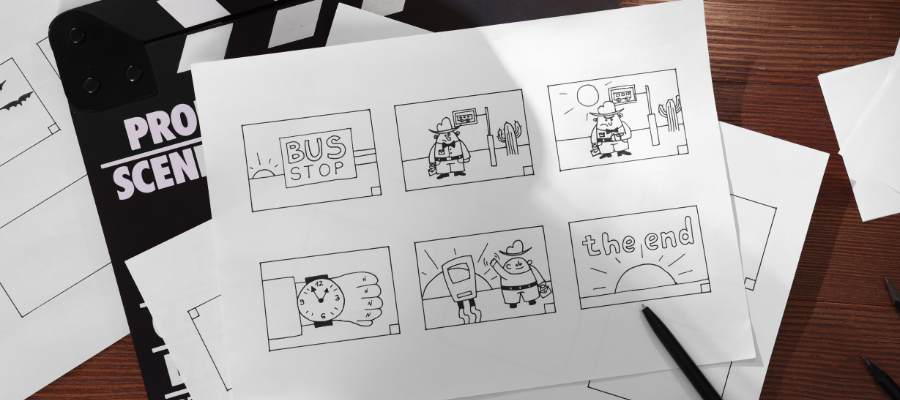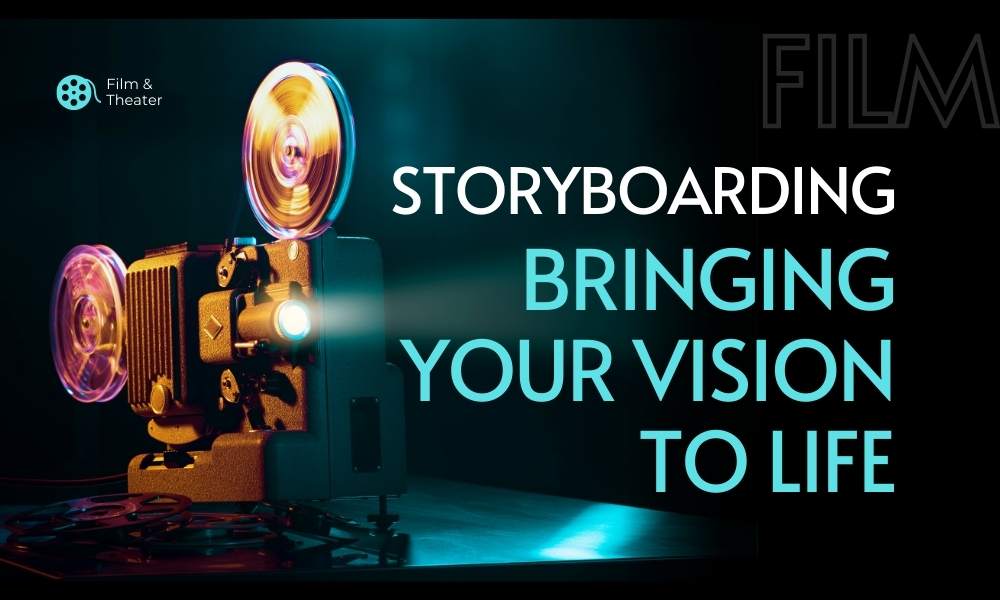From sketching your initial ideas to finalizing your visual narrative, ‘Mastering Storyboarding: Bringing Your Vision to Life’ is your guide. You’ll learn the essentials, avoid common mistakes, and master advanced video editing and production techniques.
This book bridges the gap between your creative vision and its visual realization through effective storyboarding. It’s more than just drawing; it’s about conveying your ideas, telling a compelling story, and engaging your audience visually.
Dive into the art of storyboarding and bring your vision to life.
Understanding the Basics of Storyboarding

Understanding the basics of storyboarding is often the first vital step in bringing your imaginative vision to life. Delving into storyboarding history, it’s no coincidence that this visual tool was birthed in the vibrant, fast-paced world of animation. Spending its infancy at the heart of Walt Disney Studios, storyboarding quickly proved its role significance, transforming abstract ideas into vivid scenes.
Imagine this: you’re the director of your animated epic, and your storyboard is your secret weapon. Each sketch and note is a stepping stone on your path to cinematic glory. You’re not just drawing; you’re weaving together a tapestry of action, emotion, and dialogue. Yes, it’s complex, but that’s the beauty of it. So grab your pencil; it’s time to start your storyboard journey.
Essential Tools for Effective Storyboarding
Now that you’ve grasped the basics of storyboarding, let’s explore the essential tools to bring your storyboard to life effectively. A crucial first step is selecting your Storyboard Software. An array of digital tools is available, each with unique features. Opt for a user-friendly, versatile tool capable of expressing your vision.
Next, focus on your Storyboard Layout Design. This is where you’ll arrange your scenes, dialogue, and notes. Your layout should be fluid yet structured, allowing your narrative to unfold seamlessly. To enhance visual variety, incorporate a mix of wide, medium, and close-up shots. Don’t forget to leave space for annotations. Remember, your storyboard isn’t just a sketch; it’s a visual roadmap to your final masterpiece.
Techniques for Visualizing Your Ideas
How can you visualize your ideas more effectively on your storyboard? The answer lies in mastering two crucial techniques: color usage and perspective drawing. Think of your storyboard as a vibrant canvas on which colors breathe life into your ideas. Choosing the right hues can set the mood, highlight essential elements, and evoke emotions. Try experimenting with different color palettes and see how they transform your story.
Now, let’s explore perspective drawing. This technique helps create depth and realism. It’s like providing a window into your world, inviting viewers to step in. Start with simple 3D shapes and gradually move to complex scenes. Remember, practice makes perfect. Combining color usage and perspective drawing will bring your vision to life with precision and creativity.
Common Storyboarding Mistakes to Avoid
To level up your storyboarding, you must avoid common mistakes that can hold back your creativity and impact. Don’t let your vision get lost in a sea of details. Avoid cluttered frames that confuse rather than clarify. Embrace simplicity.
Mistake Analysis is your secret weapon. It helps to identify areas where you’ve strayed from your narrative or visual goal. Have you missed key plot points? Are your frames lacking sufficient detail, or are they too busy?
Correction Strategies come into play next. This might mean stripping back overcomplicated scenes or adding missing elements to tell your story effectively. Remember, your storyboard is a visual aid; it should enhance your narrative, not detract from it. Please keep it clean, clear, and concise.
Advanced Tips for Mastering Storyboarding
Diving deeper into storyboarding mastery, you’ll find that keen attention to detail, consistent practice, and embracing creativity can significantly elevate your skills. Understand the art of narrative pacing; it’s key to engaging your audience. Too fast, and you risk leaving them behind; too slow, and their interest may wane. Instead, aim for a rhythm that keeps them hooked while smoothly advancing your story.
Next, harness the power of storyboarding analytics. By analyzing your storyboard’s structure and flow, you can pinpoint areas that need improvement. It’s like getting a bird’ s-eye view of your creation, helping you see the overall picture. Remember, each frame is a piece of your story’s puzzle.
With practice, creativity, and analytics, you’ll master storyboarding quickly.
Conclusion
Now you’ve got the lowdown on storyboarding. With the right tools, techniques, and a keen eye for avoiding common blunders, you’re ready to bring your vision to life.
Remember, storyboarding is not just about sketching scenes—it’s about telling a story. So, immerse yourself in the process, let your creativity run wild, and master the art of storyboarding.
The world is your canvas; go on and paint your story!

